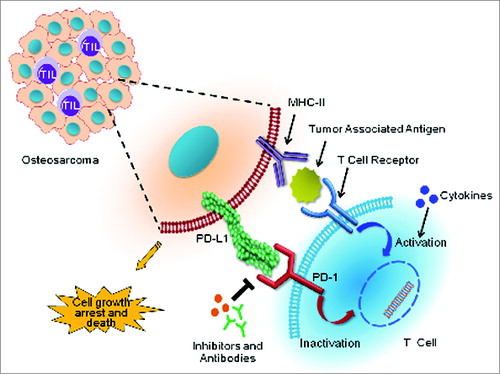Figures & data
Figure 1. Immunotherapeutic targeting of PD-1 and PDL1 reciprocal interactions between osteosarcoma cells and T cells. Binding of the T-cell inhibitory receptor programmed cell death 1 (PD-1) to its cognate ligand PDL1 on the surface of cancer cells inactivates T-cell cytotoxic functions that otherwise would induce osteosarcoma cell death. Abrogating this pathway with anti-PD-1 or PDL1 blocking antibodies (or inhibitors) prevents this inhibition, and allows the reactivation of T-cell anticancer cytotoxic functions. Adding immune activators, such as cytokines, may elicit a synergistic response to anti-PD-1/PDL1 targeted therapies in osteosarcoma.

